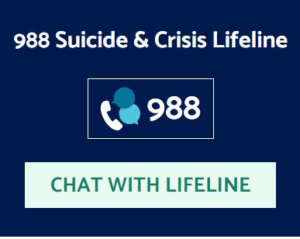Mental Health Awareness in the Construction and Mining Industry
“Are you Okay?” The Power of these 3 Simple “People First” Words, by Stacy Spector- Catamount Consulting
We recently had the opportunity to hear a first-hand account from a member of a leadership class we teach on creating “People First” Leaders, just how powerful these three simple words can be in the high paced, stressful world of the construction industry. As is common on most busy construction sites, there was an interaction between our class member, we will call “Sam” for purposes of this story, who holds a supervisory position at a construction management company and a subcontractor on the job. In coordinating the many moving parts of this job, Sam had to ask a member of the subcontractor’s team the status of a task. Sam was immediately met with a very short, hostile response about the job status. His repeated attempts for some connective conversation were shut down on all fronts. “Get lost, I gave you your status. Don’t try and talk to me. We are not friends. Get the f#*!k away from me” were the cutting words expressed to Sam. Now, here’s where the magic unfolded. Sam could have matched the emotional intensity of this individual with a few choice words of his own and been on his way. Instead, Sam used his “People First” emotional intelligence tools. He gave this guy some time to cool off and then re-approached. This time Sam was armed with these three words: “Are you Okay?” Immediately an emotionally charged “No” was expressed from the subcontractor, along with an arm’s length list of just how terrible his day started. “My truck ran out of gas, I have no money to fill it, I have no water or lunch and everything in my life is wrong right now”. Sam’s response was again genuine and simple. He said, “I can help you man. I have a gas can in my truck, I’ll give you some. I have some extra granola bars and water as well. Take them, they’ll help you get through today.” In a matter of seconds, the subcontractor seemed to calm and a grateful thank you was expressed. Perhaps, this interaction was enough to turn this guy’s bad day around and prevent further emotional distress or destructive behaviors.
This may seem like an insignificant, rather common story about a guy having a bad day, but you never know what a person has on their plate. Maybe those three simple words, “Are you Ok?”, changed the trajectory of that subcontractor’s mental health. 83% of US workers suffer from work-related stress. Moreover, workplace stress has been reported to cause over 120,000 deaths each year in the US. Stress from personal lives, along with deadlines, budgets, shortage of staff and more in spaces like the construction industry can be ingredients for not only mental health illness, but the unthinkable acts of self-harm and suicide. In 2020, the Centers for Disease Control and Prevention found that men working in the construction industry have one of the highest suicide rates compared to other industries. Their rate of suicide is about four times higher than the general population.
These startling statistics highlight the continued need to provide resources and training to all men and woman in the construction industry. The United States Department of Labor, Occupational Safety and Health Administration provides many resources on their website regarding suicide prevention and workplace stress. One of the resources offered is a downloadable poster entitled: Suicide Prevention 5 Tips You Should Know. In studying these resources, can you guess what was listed within those 5 important tips? Those three simple words, “Are you Okay?” Check it out for yourself and better yet, download a copy of this reminder, print it out and display it in your workspace. Tip #3: Ask “Are you Okay?” You can download a copy of this visual reminder for your workplace through the following link: https://www.osha.gov/sites/default/files/publications/OSHA4180.pdf. Awareness, mental health resource hotlines, professional mental health assistance are all very important elements in the fight against these stress, mental health and suicide statistics. Equally important is the training that construction companies like Sam’s employer provide for their employees. Culture work and training in the areas of engagement, emotional intelligence, psychological safety, brain science, stress, and empathy, to name a few, provide employees with real time tools and strategies that create safer jobsites. Sam hits the mental gym. Through leadership training he understands how a stressed or unregulated brain operates. He has a heighted emotional intelligence to keep his own composure. He looks through the lenses of empathy, compassion and how to meet other’s needs of significance and acceptance and because of this, for that tough day referenced above and maybe the weeks to follow, that subcontractor was Okay.

1 Centers for Disease Control and Prevention. (July 2018). Mental Health in the Workplace.2 National Institute of Mental Health. (January 2022). Mental Illness.3 Goh, J., Pfeffer, J., & Zenios, S. A. (2015). The relationship between workplace stressors and mortality and health costs in the United States. Management Science, 62(2), 608-628.4 American Psychological Organization. (October 2021). Stress in America: Stress and decision-making during the pandemic.5 The World Health Organization (2022). Mental health in the workplace.



